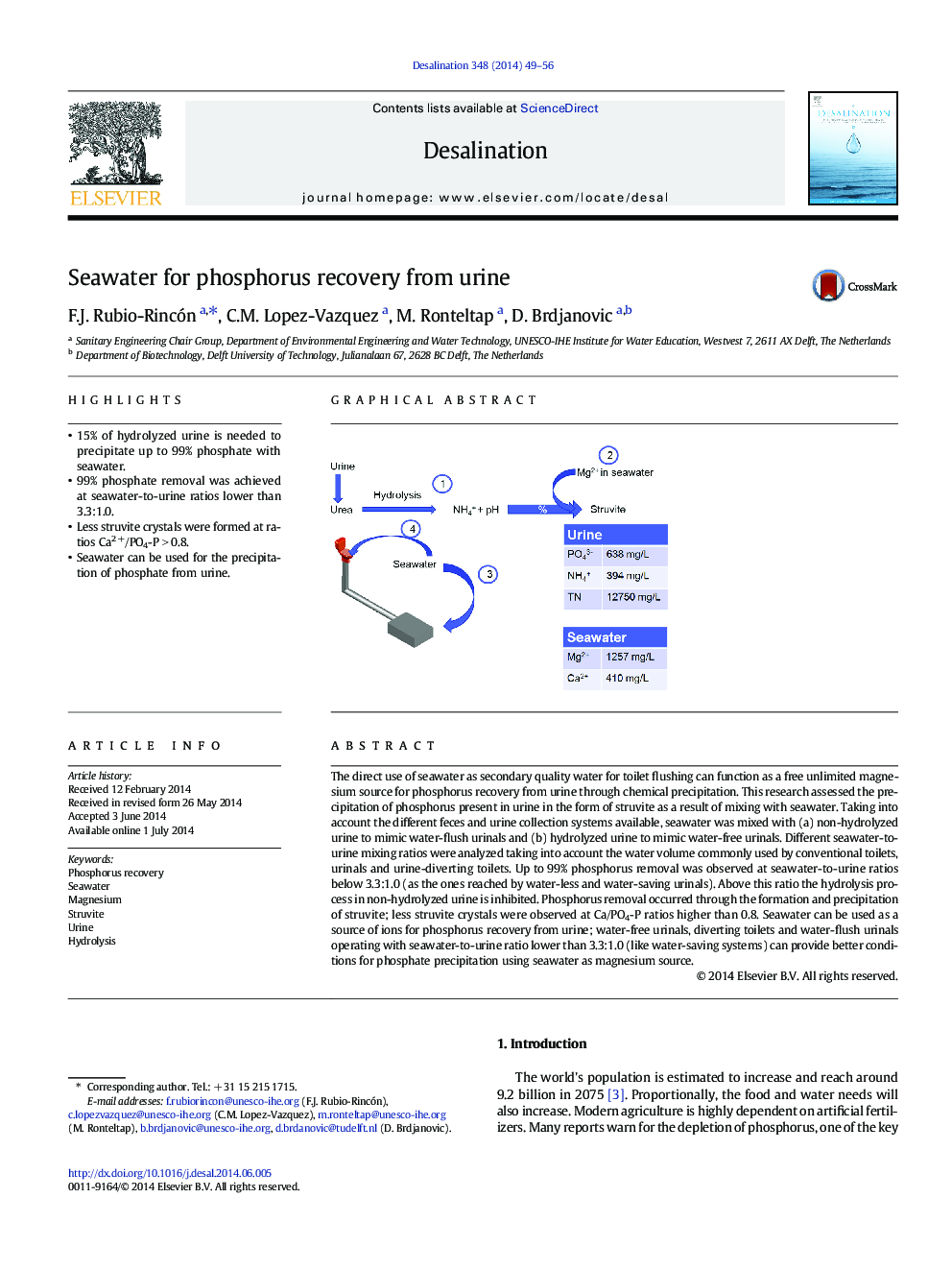| Article ID | Journal | Published Year | Pages | File Type |
|---|---|---|---|---|
| 623511 | Desalination | 2014 | 8 Pages |
•15% of hydrolyzed urine is needed to precipitate up to 99% phosphate with seawater.•99% phosphate removal was achieved at seawater-to-urine ratios lower than 3.3:1.0.•Less struvite crystals were formed at ratios Ca2 +/PO4-P > 0.8.•Seawater can be used for the precipitation of phosphate from urine.
The direct use of seawater as secondary quality water for toilet flushing can function as a free unlimited magnesium source for phosphorus recovery from urine through chemical precipitation. This research assessed the precipitation of phosphorus present in urine in the form of struvite as a result of mixing with seawater. Taking into account the different feces and urine collection systems available, seawater was mixed with (a) non-hydrolyzed urine to mimic water-flush urinals and (b) hydrolyzed urine to mimic water-free urinals. Different seawater-to-urine mixing ratios were analyzed taking into account the water volume commonly used by conventional toilets, urinals and urine-diverting toilets. Up to 99% phosphorus removal was observed at seawater-to-urine ratios below 3.3:1.0 (as the ones reached by water-less and water-saving urinals). Above this ratio the hydrolysis process in non-hydrolyzed urine is inhibited. Phosphorus removal occurred through the formation and precipitation of struvite; less struvite crystals were observed at Ca/PO4-P ratios higher than 0.8. Seawater can be used as a source of ions for phosphorus recovery from urine; water-free urinals, diverting toilets and water-flush urinals operating with seawater-to-urine ratio lower than 3.3:1.0 (like water-saving systems) can provide better conditions for phosphate precipitation using seawater as magnesium source.
Graphical abstractFigure optionsDownload full-size imageDownload as PowerPoint slide
